Mariton: What’s On The Menu?
by Tim Burris, Preserve Manager.
I was recently camping with some friends. As we sat around the campfire, we started talking about the Brood X 17-Year Cicadas. Someone asked me if they had preferred tree species since they spent 17 years underground feeding on tree roots. I didn’t know. When I got home and had internet, I checked a couple sources. They all treated the subject with broad brush strokes: “feeds on over 200 species, blah, blah, blah”. That didn’t really answer the question.
So, I did what I’ve been doing for over 30 years when faced with a weighty question about nature. I went to the source and asked the trees and cicadas. Female cicadas lay their eggs on the tips of branches. This causes the branch to brown, so it is easy to see where cicadas have been laying their eggs. When the eggs hatch, the larva fall to the ground and burrow down to the tree roots that they will feed on for the next 17 years. It would make sense that, if possible, females would select trees that would have a better survival outcome for their DNA.
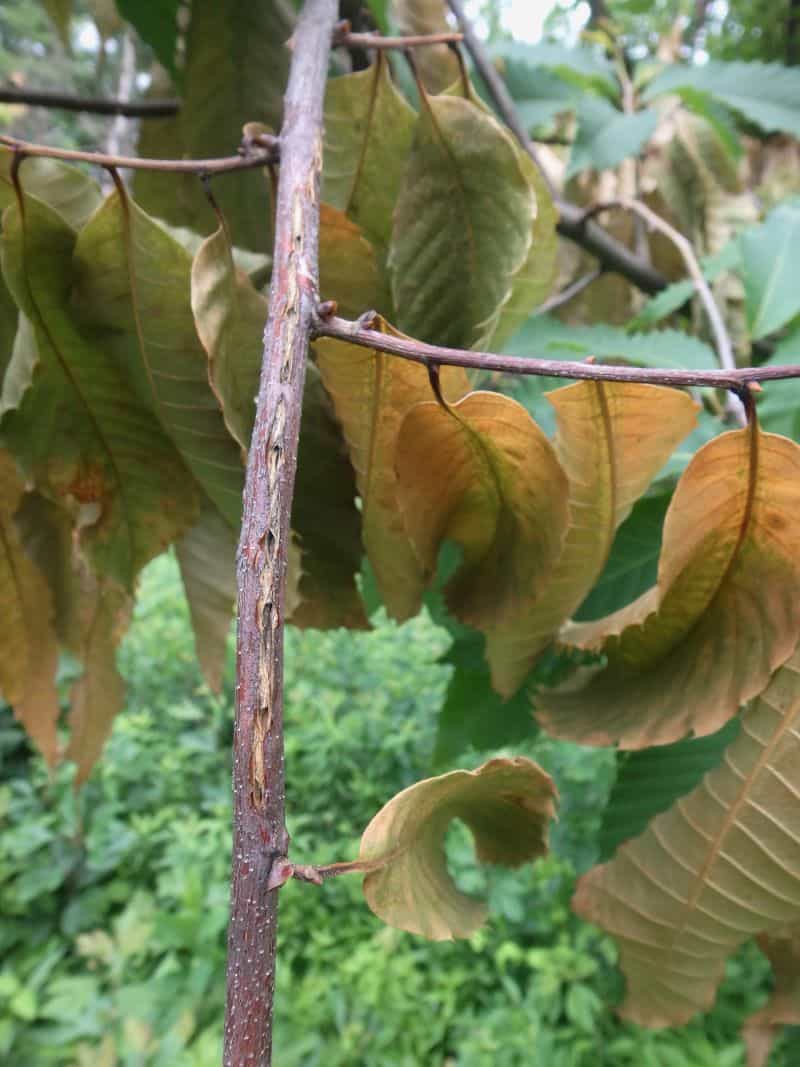
The slits on this branch are where Cicadas have laid their eggs.
So, I stood in the middle of the meadow and looked at the trees along the edge. Then I took a walk in the forest and looked up into the canopy with binoculars. What I found at Mariton was that 17-year Cicadas definitely had preferences.
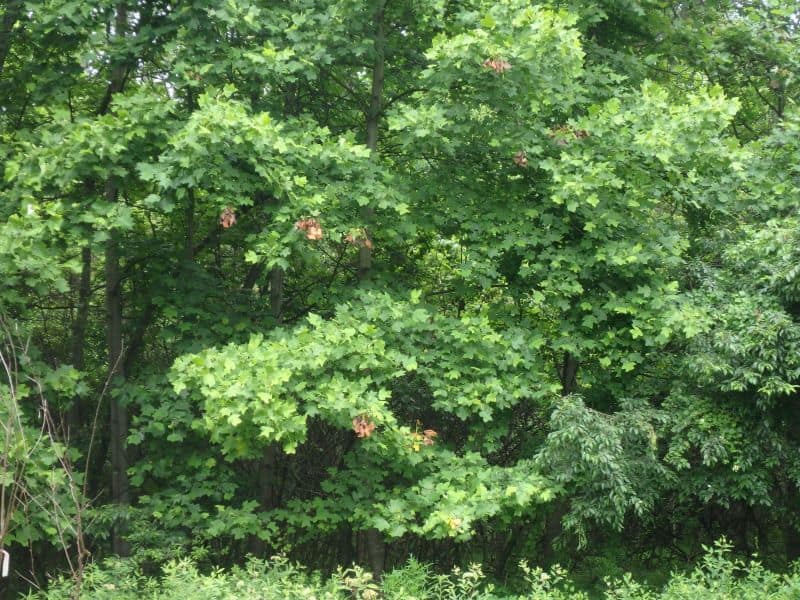
Tuliptrees with few branches showing Cicada egg laying.
You would think that since 2/3s of Mariton’s forest is made up of Tuliptrees (Lireodendron tulipifera) that Cicadas would lay a lot of eggs on this tree species. When I made my observations, however, Tuliptrees had very few brown branch tips. When you consider the available volume of branch tips, Tuliptrees were very green. This species has shallow root systems; perhaps that is the reason?
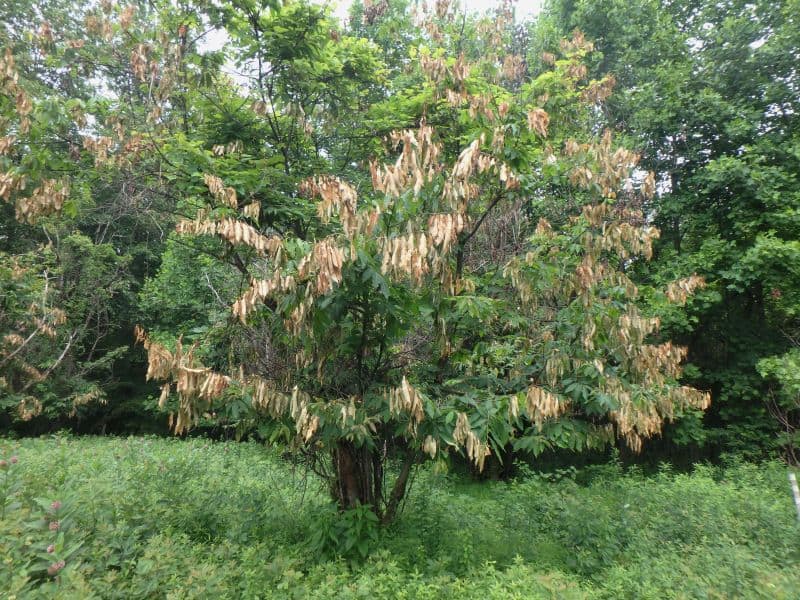
An American Chestnut with lots of Cicada egg laying.
Chestnuts (both American and Chinese chestnuts) by contrast had extremely high ratios of branch tips turning brown from Cicadas laying their eggs. From my office I can see a mature Chinese Chestnut (Castanea mollissima) in the yard. It seems like every branch tip is brown. Of course, that isn’t the case but compared to the Tuliptrees, the difference is startling.
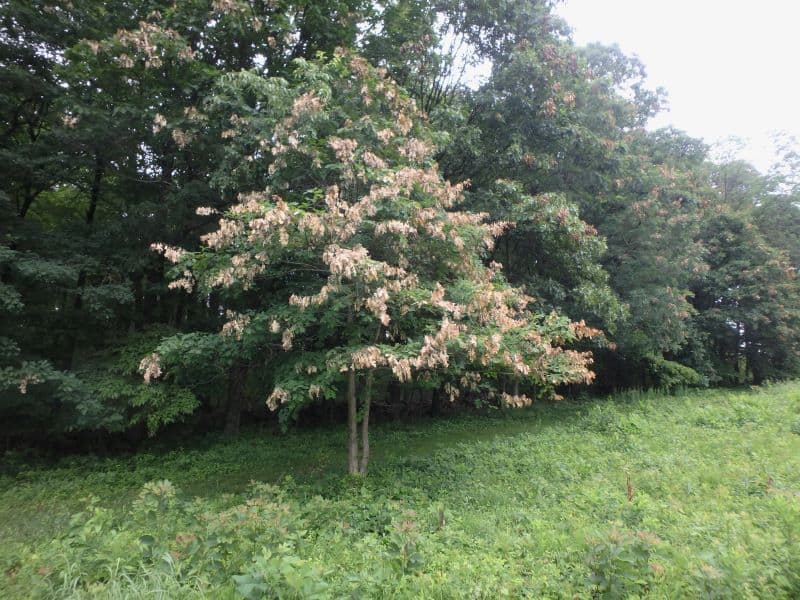
A White Oak. See the other oaks in the background.
Oaks are in the Beech Family (as are Chestnuts) and also showed a preponderance of brown branch tips from Cicadas laying eggs.
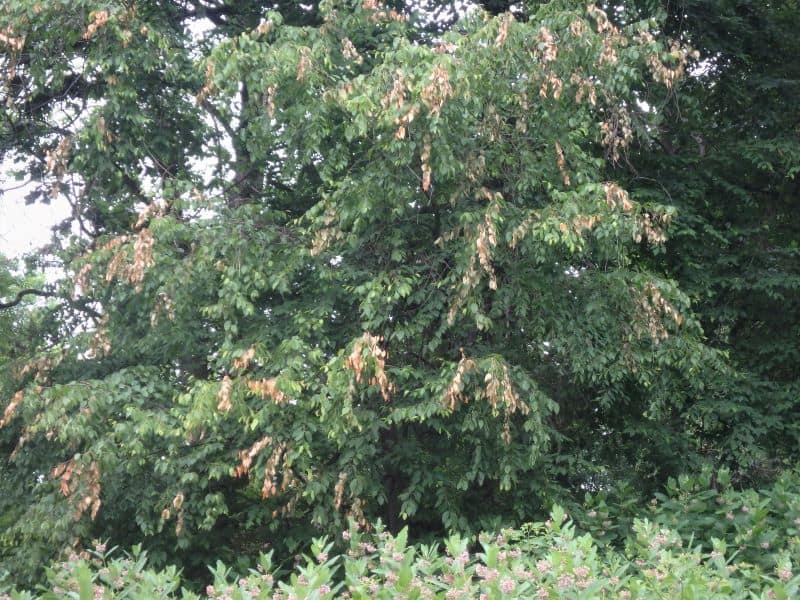
A Sweet Birch.
I remember from 2004 a particular Sweet Birch (Betula lenta) on the meadow’s edge that was heavily browned. That same tree again has lots of brown branches from Cicada egg laying. Sweet Birches throughout my observations seem to be preferred. Interestingly, there are River Birches (Betula nigra) and a Paper Birch (B. papyrifera) in the yard that have few if any brown branches.
Hackberry (Celtis occidentalis) had lots of brown branch tips. We have a grove of Hackberry trees near the beginning of the Woods Trail. It is one of the places where we saw the highest concentration of nymph cases at the very beginning of the Cicada emergence. Sassafras and Tupelo also showed some preference for egg laying.
I found a White Ash (Fraxinus americana) that was heavily used. Many Ash trees have died since 2004 as a result of Emerald Ash Borer, so it makes sense that we might hear less Brood X Cicadas this year in those places.
There were several species that I had a hard time finding brown-branch-tips. Dogwoods, Walnuts, Hickories, and Cherries don’t seem to be prime species for Cicadas at Mariton. Even maples (including Box Elder) were relatively untouched. (Even though the literature said maples were used heavily.)
This is far from scientific, but it does seem that 17 Year Cicadas have preferences for certain species. It may also differ from place to place, but I can definitely see those preferences at Mariton.
